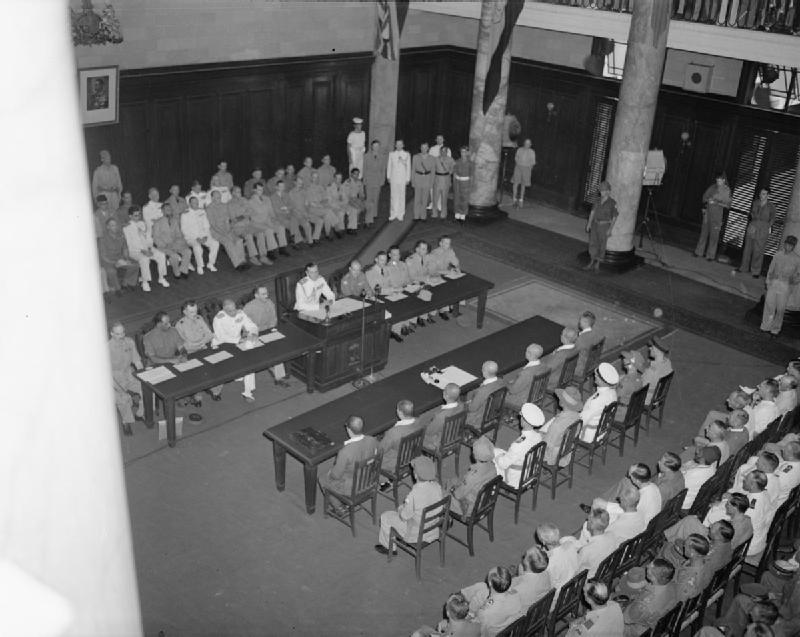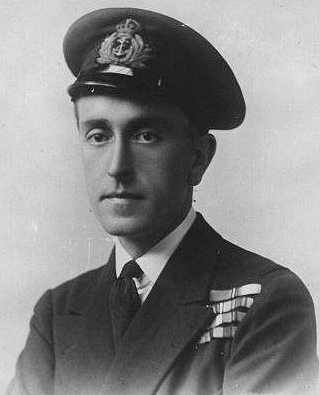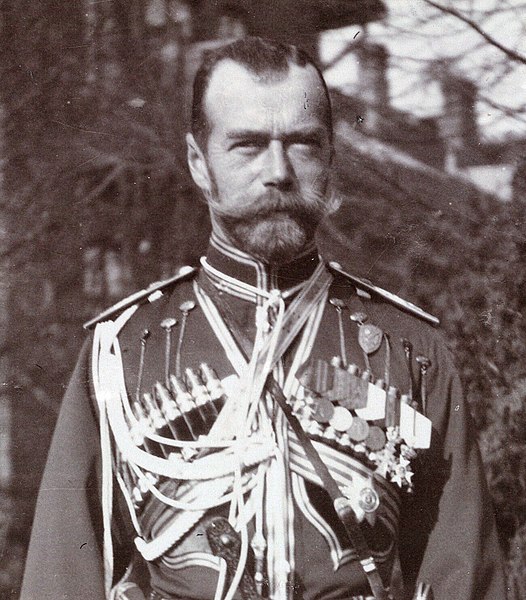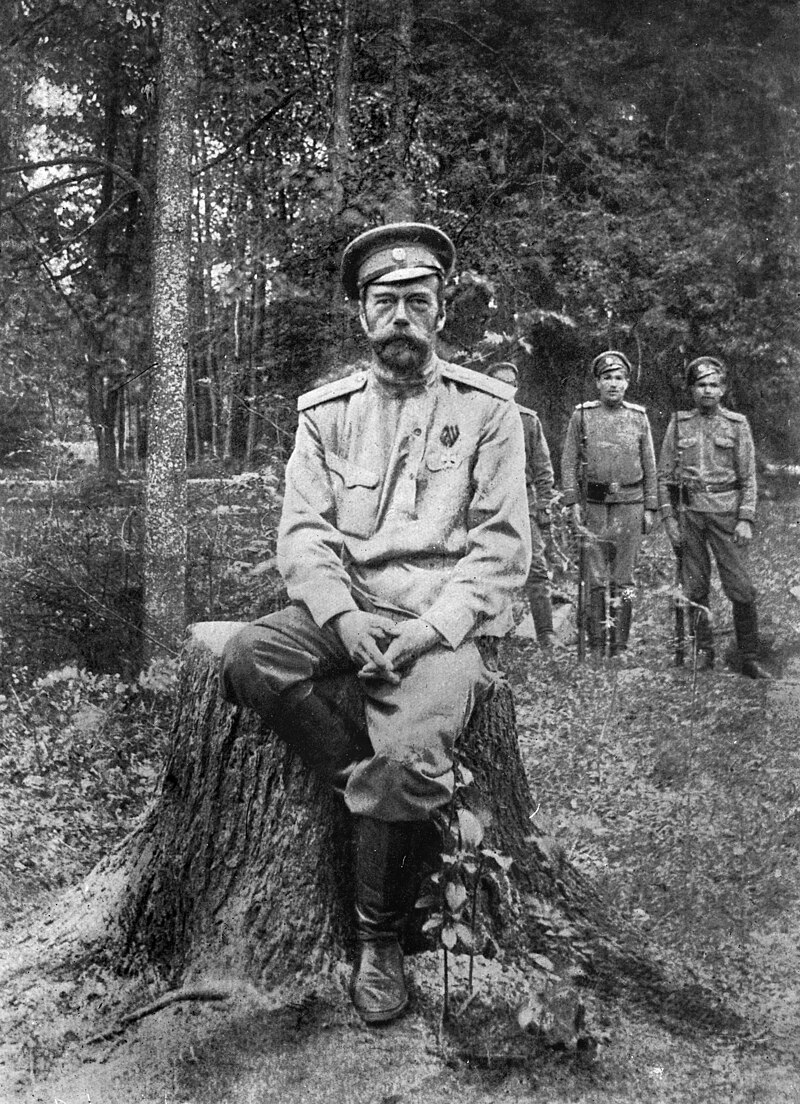by Susan Flantzer © Unofficial Royalty 2017

Statue of Robert the Bruce in Stirling, Scotland; Credit – By Ally Crockford – Own work, https://commons.wikimedia.org/w/index.php?curid=28842870
Robert the Bruce is a Scottish national hero and was King of Scots during the First War of Scottish Independence. Robert de Bruis (or Brus), his birth name from his Norman ancestors, popularly called Robert the Bruce, was born on July 11, 1274. He was the eldest son and third of the eleven children of Robert de Bruis, 6th Lord of Annandale and Marjorie, Countess of Carrick in her own right. His birthplace is uncertain, but he was probably born at the Carrick family’s main castle, Turnberry Castle in Ayrshire, Scotland.

The ruins of Turnberry Castle; By Walter Baxter, CC BY-SA 2.0, https://commons.wikimedia.org/w/index.php?curid=14529485
Robert had ten siblings. Three of his four brothers were executed and the fourth was killed in battle.
- Isabel Bruce (circa 1272 – 1358), married King Eric II of Norway (second marriage), had one daughter
- Christina Bruce (circa 1273 – circa 1356), married (1) Sir Christopher Seton; (2) Sir Andrew Murray
- Niall de Brus (circa 1276 – 1306), hanged, drawn, and quartered by the forces of King Edward I of England
- Edward Bruce (circa 1279 – 1318); possibly married to his mistress Isabella of Ross, had one son; proclaimed High King of Ireland, killed in battle
- Mary Bruce (circa 1282 – 1323); married (1) Sir Neil Campbell, had issue (2) Sir Alexander Fraser of Touchfraser and Cowie, had issue
- Margaret Bruce (born circa 1283), married Sir William Carlyle
- Sir Thomas de Brus (circa 1284 – 1307), married Helen Erskine; executed with his brother Alexander
- Alexander de Brus (circa 1285 – 1307), executed with his brother Thomas
- Elizabeth Bruce (born circa 1286), married Sir William Dishington of Ardross, Fife
- Marjorie Bruce (circa 1287 – circa 1323), married Hugh, Earl of Ross
Not much is known about Robert’s childhood. It can be assumed that he was trilingual. He and his brothers would have learned the Anglo-Norman language of their father, the Gaelic language of their mother, and Latin which would have given them an access to a basic education. The tutors for Robert and his brothers were most likely from the clergy, especially clergy associated with churches and abbeys their family patronized. Robert and his brothers would have had masters who taught them horsemanship, swordsmanship, jousting, hunting, and the code of chivalry. The family would have moved between the castles of their lordships: Lochmaben Castle, the main castle of the lordship of Annandale, and Turnberry Castle and Loch Doon Castle, the castles of the earldom of Carrick. When Robert was about twelve years old, his training for knighthood would have begun and he would have resided with one or more allied English noble families.
Robert’s family was involved in the political turmoil that occurred following the death of Alexander III, King of Scots. Alexander III, King of Scots (reigned 1249 – 1286) had only two surviving children, a son Alexander and a daughter Margaret who married King Eric II of Norway. Margaret of Scotland, Queen of Norway died in childbirth in 1283, giving birth to her only child Margaret, Maid of Norway. In 1284, the earls and barons of Scotland recognized Margaret, Maid of Norway as the heir to the throne of her grandfather King Alexander III of Scotland if he died without a male heir. Later that year, Alexander III’s 20-year-old Alexander died. When Alexander III died in 1286, his three-year-old granddaughter was the heir to his throne. The Scottish earls, barons, and clerics met to select the Guardians of Scotland who would rule the kingdom for the rightful heir. In 1290, Margaret, Maid of Norway died while traveling to Scotland,

Margaret, Maid of Norway; Stained glass window at Lerwick Town Hall in Scotland; Photo Credit – By Colin Smith, CC BY-SA 2.0, https://commons.wikimedia.org/w/index.php?curid=18837762
The death of Margaret, Maid of Norway began a two-year interregnum in Scotland caused by the succession crisis. With Margaret’s death, the line of William I (the Lion), King of Scots became extinct and there was no obvious heir. Fifteen candidates presented themselves as candidates for the throne of Scotland. The most prominent were John Balliol, great-grandson of William I’s younger brother David, Earl of Huntingdon, and Robert de Brus, 5th Lord of Annandale, David of Huntingdon’s grandson and the grandfather of Robert the Bruce.
The Scottish lords invited King Edward I of England to arbitrate the claims. Edward I agreed but forced the Scots to swear allegiance to him as their overlord. In 1292, it was decided that John Balliol should become King of Scots. After John Balliol became King, Robert, 5th Lord of Annandale resigned the lordship of Annandale and his claim to the throne to his eldest son Robert de Brus, the father of Robert the Bruce. Around the same time, Robert de Brus, 6th Lord of Annandale’s wife Marjorie, Countess of Carrick died, and the Earldom of Carrick, which Robert had ruled jure uxoris (by right of his wife), devolved upon their eldest son, Robert the Bruce. John Balliol proved weak and incapable, and in 1296 was forced to abdicate by Edward I, who then attempted to annex Scotland into the Kingdom of England. For ten years, there was no monarch of Scotland.
The Scots refused to tolerate English rule, resulting in the Wars of Scottish Independence, a series of military campaigns fought between Scotland and England, first led by William Wallace and after his execution, led by Robert the Bruce. Robert the Bruce as Earl of Carrick and 7th Lord of Annandale, held estates and property in Scotland, a barony and some minor properties in England, and a strong claim to the throne of Scotland.

Notable figures in the first Scottish War of Independence, Detail from a frieze in the entrance hall of the Scottish National Portrait Gallery, Edinburgh; Photo Credit – By William Brassey Hole – CC BY-SA 3.0, https://commons.wikimedia.org/w/index.php?curid=32601439
On February 10, 1306, Robert the Bruce and his supporters killed a rival for the throne, John III Comyn, Lord of Badenoch at Greyfriars Church in Dumfries, Scotland. There had been long-time bad blood between the two men, and they had found it impossible to work together as Guardians of Scotland. Shortly after, Robert and his followers went to Scone, the traditional coronation site of the Kings of Scots. On March 27, 1306, Robert the Bruce was proclaimed Robert I, King of Scots, and the crown was placed on his head by Isabella MacDuff, Countess of Buchan “in the presence and with the consent of four bishops, five earls, and with the consent of the people.” According to tradition, the ceremony of crowning the monarch was performed by a representative of Clan MacDuff.

Isabella MacDuff, Countess of Buchan, crowns Robert the Bruce at Scone in 1306 from a modern tableau at Edinburgh Castle; Credit – Wikipedia
Robert married two times. His first wife Isabella of Mar died before her husband became king. She was born about 1277 at Kildrummy Castle and was the daughter of Domhnall (Donald), 6th Earl of Mar and Elen the Younger ferch Llywelyn, an illegitimate daughter of the de facto Prince of Wales, Llywelyn Fawr (Llywelyn the Great), Prince of Gwynedd and Prince of Powys Wenwynwyn.
Isabella’s father was the Earl of Mar, in Gaelic, the Mormaer of Mar. A mormaer was a regional or provincial ruler, second only to the King of Scots, and more senior than a taoiseach or chieftain. Mormaers were equivalent to English earls. Mar was located in present-day Aberdeenshire, Scotland. Kildrummy Castle near Kildrummy in Aberdeenshire, Scotland was the Mar family seat.

Isabella of Mar with her husband from the Forman Armorial, produced for Mary, Queen of Scots in 1562; Credit – Wikipedia
After the death of Margaret, Maid of Norway in 1290, Domhnall, 6th Earl of Mar became one of the first Scottish nobles who supported the claim of Robert the Bruce, Earl of Carrick to the throne of Scotland. Domhnall saw a great advantage to his family if one of his daughters married Robert. In 1295, Robert the Bruce, Earl of Carrick and Isabella of Mar married. Shortly after the wedding, Isabella became pregnant. Nineteen-year-old Isabella had a healthy pregnancy but died soon after giving birth to a daughter named Marjorie on December 12, 1296, at the Manor of Cardross in Dunbartonshire, Scotland. Isabella was buried at Paisley Abbey in Paisley, Renfrewshire, Scotland, but her tomb has not survived.
Isabella’s daughter, Princess Marjorie, once her father became Robert I, King of Scots in 1306, married Walter Stewart, 6th High Steward of Scotland in 1315. On March 2, 1316, Marjorie, who was pregnant, was riding in Paisley, Renfrewshire. Her horse was suddenly startled and threw her to the ground. Marjorie went into premature labor and her child Robert was delivered by cesarean section at Paisley Abbey. Marjorie died within a few hours. She was 19 years old at the time of her death, like her mother, who was the same age when she died in childbirth, and like her mother, was also buried at Paisley Abbey. Her son became Robert II, King of Scots, the first monarch of the House of Stewart. Marjorie’s descendants include the House of Stuart, all their successors on the thrones of Scotland, Great Britain, and the United Kingdom, and many other European royal families.

Marjorie Bruce’s tomb in Paisley Abbey; Photo Credit – By © User:Colin / Wikimedia Commons, CC BY-SA 4.0, https://commons.wikimedia.org/w/index.php?curid=47156391
Robert’s second marriage was to Elizabeth de Burgh, the third of the ten children of Richard Óg de Burgh, 2nd Earl of Ulster and 3rd Baron of Connaught and his wife Margaret, possibly his cousin Margaret de Burgh or Margaret de Guines. Elizabeth’s father Richard Óg de Burgh, 2nd Earl of Ulster and 3rd Baron of Connaught was one of the most powerful Irish nobles of his time. He was the friend and ally of King Edward I of England and ranked first among the Earls of Ireland. Elizabeth probably met Robert the Bruce, then the Earl of Carrick, at the English court. Today, Earl of Carrick, which came from the family of Robert’s mother, is one of the titles of the eldest living son and heir-apparent of the British sovereign. Along with Duke of Rothesay, Earl of Carrick was one of the traditional titles of the eldest living son and heir-apparent of the throne of Scotland. When King James VI of Scotland also became King James I of England after the death of Queen Elizabeth I of England, the Scottish titles came along with him.

Robert the Bruce and Elizabeth de Burgh from Seton Armorial in the Nation Library of Scotland (MS Acc. 9309); Credit – Wikipedia
Elizabeth de Burgh and Robert married at Writtle, near Chelmsford, Essex, England in 1302 when Elizabeth was about 18 years old and Robert was 28 years old. In 1306, when her husband became King of Scots and Elizabeth de Burgh became Queen of Scots, she did not think she would be queen for long because she feared her husband would be defeated by Edward I. She supposedly said, “Alas, we are but king and queen of the May! ” Both Robert the Bruce and John Comyn had sworn fealty to King Edward I of England. When Edward I heard that John Comyn had been murdered, he vowed “by the God of Heaven and these swans” to avenge Comyn’s death and the treachery of the Scots. On his demand, his knights took a similar oath and were sent off to Scotland to seek revenge.
In Scotland, Robert I, King of Scots was already engaged in a civil war with the family and friends of the murdered John Comyn. His coronation had given him some legitimacy, but his position was uncertain. By the middle of June 1306, the English were in Perth, Scotland, and were joined by supporters of John Comyn. Robert, abiding by the conventions of feudal warfare, invited the English commander to leave the walls of Perth and join him in battle, but the English commander declined to do so. Robert believed that the English refusal to accept his challenge was a sign of weakness, and moved his forces a few miles to nearby Methven, where he made camp for the night. Before dawn on June 19, 1306, Robert’s army was taken by surprise and almost destroyed. Robert barely escaped and fled with a few followers to the Scottish Highlands.
Elizabeth was not so lucky. After the Battle of Methven, under the protection of his brother Niall, Robert sent Elizabeth, his daughter Marjorie from his first marriage, his sisters Mary and Christina and Isabella MacDuff, Countess of Buchan (who had crowned him) to Kildrummy Castle, the seat of the Earls of Mar, the family of his first wife Isabella of Mar. The English besieged Kildrummy Castle and Niall Bruce and all the men of the castle were hanged, drawn, and quartered. However, the women had escaped and sought sanctuary at St. Duthac’s Chapel in Tain, Scotland. Their sanctuary was breached by William, Earl of Ross who had the women arrested and handed over to the English.
King Edward I of England sent his hostages to different places in England. Marjorie went to the convent at Watton, Yorkshire and her aunt Christina Bruce was sent to another convent. Marjorie’s aunt Mary Bruce and Isabella MacDuff, Countess of Buchan were imprisoned in wooden cages and exposed to public view. Mary’s cage was at Roxburgh Castle and Isabella’s was at Berwick Castle. Marjorie, Mary, and Christina were set free around 1314 – 1315, probably in exchange for English noblemen captured after the Battle of Bannockburn in June 1314. There is no mention of Isabella MacDuff, Countess of Buchan in the records, so she probably died in captivity.
Queen Elizabeth’s punishment was lighter than that of the other women because King Edward I needed the support of her father, the powerful Earl of Ulster. She was imprisoned for eight years by the English and was moved around quite a bit, being held captive in English manor houses, castles, and abbeys. After the Scots’ victory at the Battle of Bannockburn where they routed the English in June 1314, Elizabeth was moved to York while prisoner exchange talks took place and where she had an audience with King Edward II of England who had succeeded his father in 1307. Finally, in November 1314, she was moved to Carlisle, close to the Scots border, just before the exchange and her return to Scotland. Because of the turmoil in Scotland and Elizabeth’s imprisonment, Robert and Elizabeth did not have any children until after her return to Scotland in 1314.
Elizabeth de Burgh and Robert had four children:
-
- Margaret (born between 1315 and 1323 – March 30, 1346), William de Moravia, 5th Earl of Sutherland, had one son John who died of the plague at age 20, Margaret died in childbirth
- Matilda (born between 1315 and 1323 – July 30, 1353), married Thomas Isaac, had two daughters
- David II, King of Scots (March 5, 1324 – February 22, 1371), twin of John, married (1) Joan of The Tower, daughter of King Edward II of England, no issue (2) Margaret Drummond, no issue
- John (March 5, 1324 – before 1327), the younger twin of David, died young
While Elizabeth and the other women were held as hostages by King Edward I and then by his son King Edward II, Robert continued his fight for Scottish independence. After hiding for nearly a year in the Scottish Highlands following his defeat at the Battle of Methven, Robert came out of hiding and defeated the English at the Battle of Loudon Hill on May 10, 1307. During the following two years, Robert won back most of the country. His forces continued to grow in strength, encouraged in part by the death of King Edward I in July 1307. Raids into northern England took place in 1312-1313. The decisive Battle of Bannockburn, a landmark in Scottish history, occurred near Stirling, Scotland on June 24, 1314. Stirling Castle, a Scots royal fortress, occupied by the English, was under siege by the Scottish army. King Edward II of England, who was at the battle, assembled a formidable force to stop the siege. This attempt failed, and Edward II’s army was defeated by a smaller army commanded by Robert the Bruce.
700th Anniversary of the Battle of Bannockburn, Robert the Bruce’s statue at the battlefield
In 1320, the Declaration of Arbroath was sent by a group of Scottish nobles to the Pope affirming Scottish independence from England. Two similar declarations were sent by the Scottish clergy and Robert the Bruce. In 1327, King Edward II of England was deposed and killed. An invasion of northern England by Robert the Bruce forced King Edward III of England to sign the Treaty of Edinburgh-Northampton on May 1, 1328. The treaty recognized the full independence of the Kingdom of Scotland and acknowledged Robert the Bruce, and his heirs and successors, as the rightful rulers. To further seal the peace, Robert’s son and heir, the future David II, King of Scots, married the sister of Edward III, Joan of the Tower.
Robert’s wife Elizabeth de Burgh died on October 27, 1327, at Cullen Castle in Banffshire, Scotland, aged about 43-years-old. She was buried at Dunfermline Abbey in Dunfermline, Fife, Scotland, the resting place of many Kings and Queens of Scots.
Robert had been suffering from a serious illness from at least 1327. Chronicles from the time state that he was said to have contracted and died of leprosy and that he was a victim of “la grosse maladie”, which is usually taken to mean leprosy. Historians have disagreed with the leprosy diagnosis with claims that there does not seem to be any evidence as to what the king himself or his physicians believed his illness to be, nor is there any evidence of an attempt in his last years to segregate Robert in any way from friends, family, courtiers, or foreign diplomats as would have been done if Robert had leprosy.
However, research of Robert the Bruce’s skull and the reconstruction of his face released in December 2016 by a collaboration between historians from the University of Glasgow and craniofacial experts from Liverpool John Moores University, shows that his skull shows the signs of leprosy, including a disfigured jaw and nose. Professor Caroline Wilkinson, director of the Face Lab at LJMU, who also reconstructed the face of Richard III, said: “We could accurately establish the muscle formation from the positions of the skull bones to determine the shape and structure of the face. We produced two versions – one without leprosy and one with a mild representation of leprosy. He may have had leprosy, but if he did it is likely that it did not manifest strongly on his face.”

Facial reconstructions of Robert the Bruce; Photo Credit – Liverpool John Moores University https://www.ljmu.ac.uk
Robert I the Bruce, King of Scots survived his wife by only 19 months. He died at the age of 54 on June 7, 1329, at the Manor of Cardross, near Dumbarton, Scotland. He was succeeded by his five-year-old son David II, King of Scots. Robert’s funeral procession was led by a line of knights dressed in black which included Robert’s 13-year-old grandson Robert Stewart, the future Robert II, King of Scots, the son of his daughter Marjorie Bruce. Robert the Bruce was buried at Dunfermline Abbey next to his wife in a vault in front of the high altar. A monument made in Paris of gilded marble was erected over the vault. Because he had been denied the chance to participate in a crusade, Robert ordered that his heart should be removed and taken to the Holy Land. This was to be done by Sir James Douglas, one of the chief commanders during the Wars of Scottish Independence, but Sir James and his companions were killed in Spain on the way to the Holy Land. Robert’s heart was then brought back to Scotland and buried at Melrose Abbey in Melrose, Roxburghshire, Scotland.

Modern marker for the site of the burial of the heart of Robert the Bruce at Melrose Abbey; Photo Credit – By Otter at nl.wikipedia, CC BY-SA 3.0, https://commons.wikimedia.org/w/index.php?curid=3378812
In 1560, Dunfermline Abbey was sacked by the Calvinists during the Scottish Reformation, and Elizabeth and Robert’s tomb was destroyed. During construction work on the new abbey in 1819, Robert’s coffin was discovered and Elizabeth’s coffin was rediscovered in 1917. Both coffins were re-interred in the new abbey.

The Victorian brass plate covering the tomb of Robert Bruce and Elizabeth de Burgh; Credit – By Otter – Own work, CC BY-SA 3.0, https://commons.wikimedia.org/w/index.php?curid=5117548
This article is the intellectual property of Unofficial Royalty and is NOT TO BE COPIED, EDITED, OR POSTED IN ANY FORM ON ANOTHER WEBSITE under any circumstances. It is permissible to use a link that directs to Unofficial Royalty.
Works Cited
- Ashley, Michael. British Kings & Queens. 1st ed. New York: Barnes & Noble Books, 1998. Print.
- “Battle Of Bannockburn”. En.wikipedia.org. N.p., 2017. Web. 5 Apr. 2017.
- “Battle Of Methven”. En.wikipedia.org. N.p., 2017. Web. 3 Apr. 2017.
- Dodson, Aidan. The Royal Tombs Of Great Britain. 1st ed. London: Duckworth, 2004. Print.
- “Elizabeth De Burgh”. En.wikipedia.org. N.p., 2017. Web. 3 Apr. 2017.
- “First War Of Scottish Independence”. En.wikipedia.org. N.p., 2017. Web. 5 Apr. 2017.
- “Is This The Face Of Robert The Bruce?”. Ljmu.ac.uk. N.p., 2017. Web. 5 Apr. 2017.
- “Isabella Of Mar”. En.wikipedia.org. N.p., 2017. Web. 5 Apr. 2017.
- “Robert The Bruce”. En.wikipedia.org. N.p., 2017. Web. 3 Apr. 2017.
- Sarah Knapton. “Face Of Robert The Bruce Reconstructed Showing Scottish King Had Leprosy”. The Telegraph. N.p., 2017. Web. 5 Apr. 2017.
- Williamson, David. Brewer’s British Royalty. London: Cassell, 1996. Print.





























